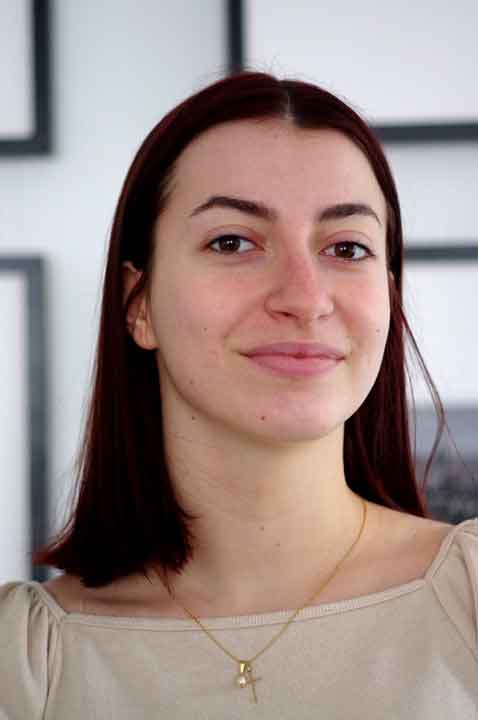Some artists are chaotic, some are alchemists and some are archivists.
Well, to understand how I organize and structure everything and how the system of filing documents can be the main point of such a profession, I will tell you some stories about me and maybe afterwards you will know if I am a chaotic or an alchemist.
The archives of commission deliveries, the anecdote of New York
Everyone has their own way of filing and archiving their business documents; they can be personal or business documents. I have been looking for the best way to sort my files for a long time and I have always taken my inspiration from other professions. I wanted to keep everything organized, to keep every folder in order since the beginning of my career, and I was right. As a young artist, you may not want to put so much emphasis on formal, bureaucratic or accounting records. But since you want to make money with your work, you have to pay attention to everything that has to do with it. I learned early on those papers are the only way to keep an eye on my artwork.
The first story I am about to tell you is exactly about how essential it is to keep all the paperwork structured and in order. It is about a time when I was involved with a gallery in New York in 2002/3. Unfortunately, the gallery was rather unorganized. At that time, since 2002, I was already working with galleries in the US. One of them asked me to do two exhibitions in New York at the beginning of 2003. Great! Not many artists are offered solo exhibitions in New York. As an artist, however, you can't deliver every work personally, you have to send it via carriers or parcel services like Fedex, TNT, DHL or UPS. That is precisely what I did. Packing and picking is always a huge effort because you have to consider so many individual steps. During this time, I learned what real organization means. Good software could simplify this many times over. Yet that's a completely different topic, which I'll deal with later.
In those days, I had to manage and keep an eye on over 500 works that were on commission at the galleries. Somehow it was exactly as I had imagined it: a real kindergarten, though a chaotic one. I didn't want anything to go wrong. Especially with the edition numbers, everything should always be correct. I had to prevent misunderstandings or problems that could arise during the lending process, so I always kept copies of everything. Order, delivery note, air waybill, fax logs, customs papers. As a professional artist, you have to be aware that every single work is your property and worth its money! These artworks go to the galleries and you need to keep an eye on them.
What was the most helpful were the delivery notes, customs papers and air waybills, which documented the route of the delivery, but were also proof that my commission was delivered on time and in good shape. I kept these papers as permanent records in case it had to be checked later. However, they were not the only documents that were useful to me in this experience, I also kept something like the fax logs that I could use to prove the delivery note that was sent.
It turned out that I was lucky to have kept everything. At the beginning of 2003, when the exhibitions started, I had the feeling that something was wrong with my artworks in New York. To be sure of this, I flew to New York. I had all the copies of the documents related to this collaboration with me. It was a really bad experience, because the gallery only had 40 works listed, although I had sent them more than 60. Thanks to the papers I had kept, I was able to prove everything. The gallery was not very professional and had lost, or deliberately lost, most of their records of my sales. That was a big loss of confidence in a business collaboration. I wouldn't want to accuse fraud today. But I learned that gallery owners speculate on the stupidity of artists. I left the gallery. The gallery continued to sell, but did not pay me. That meant a loss of thousands of dollars for me. It was really stressful. I wanted to get a lawyer, but an American lawyer costs too much money for an artist, I couldn't afford it. Instead, I approached the liquidation service of the German Chamber of Commerce Abroad in New York. Thus, with the help of the Chamber of Foreign Trade, I was able to put so much pressure on the gallery that they paid me back part of the money. Today, they still owe me about 10,000 USD. The gallery went bankrupt and was deregistered. Nevertheless, both owners are still working as gallery owners and consultants in New York. Feel free to ask me who they were.
Since my paintings and productions are at the heart of my business, I have to be well organised and careful when it comes to trading and lending them. This story has taught me that you can't rely on others and should always keep everything under your own control. To actually have all the documents and have them clearly within reach was just right and once again a lesson I would hopefully not do again.
Catalog Raisonné as filing inspiration
It was also during this time that so many paintings were on the move and my notoriety was growing, my art was increasing in value and keeping track of it was becoming more onerous. I had to react quickly and decided to create a catalogue raisonné both as an Excel spreadsheet and on paper in binders. This is not so easy, because in photography, starting from the negative, or the original file, there can always be prints in different sizes and there is always an edition, i.e., number of prints, which may also follow an American scale price system.
Thanks to this file and the papers I have kept, I can also see the increase in my sales per picture. Pictures that I used to sell for 100 euros, for example, now sell for 2000 euros. However, it is also important to note that as the sales prices increase, so do the expenses. This is another reason why you should consider art as a business in its own right, which has to make a profit in order to maintain your freedom and independence. Otherwise, you remain an amateur who likes to do a bit of art as a hobby in his spare time.
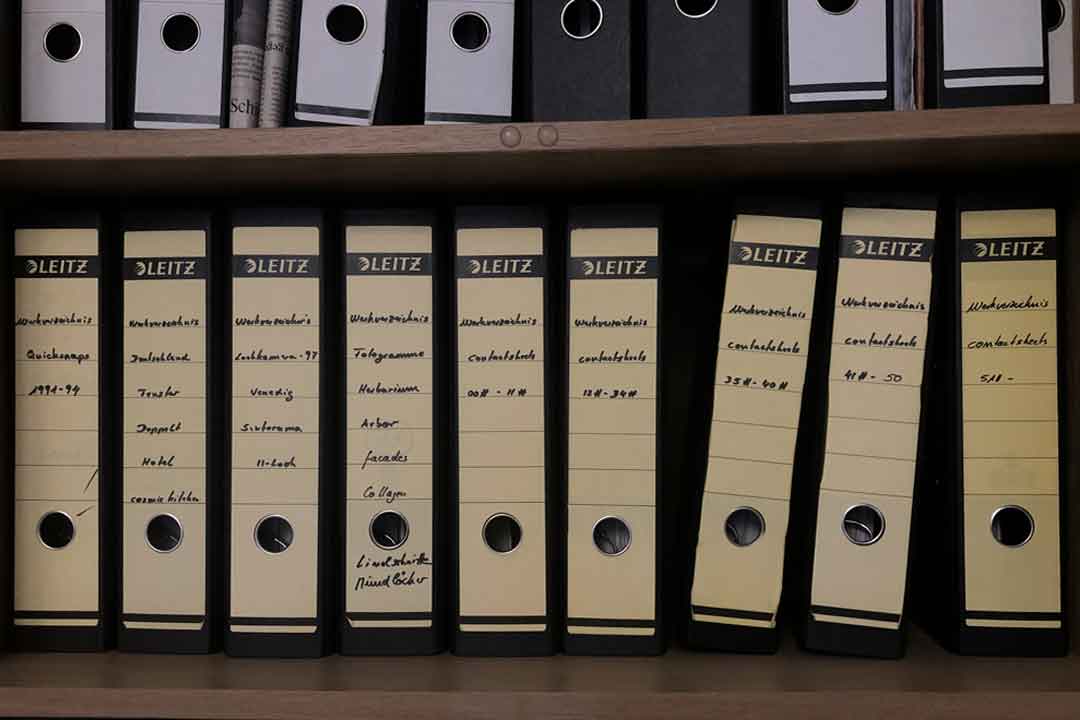
Correspondence, from paper to online software
In Germany, we are legally obligated to keep business records carefully. By law, business records must remain available for ten years after their creation in case the tax office needs them one day. To do so, there are many possibilities to file papers. I have chosen to file mainly printed correspondence in classic alphabetical order in file folders. I have a file folder for accounting, one for correspondence, one for contacts, etc.
The last and most important file I keep as a photographer is the contacts I have made throughout my career. For that I have the correspondence folder, which is an essential binder. Today I have very few correspondences on printed paper and I am in the process of switching to a digital filing system. I bought the COBRA software to do help me switching: a very useful software that records all my contacts. I have up to 5000 contacts recorded in this client management software (CMS). That's a lot for me to handle, maintain and manage. At one time I had up to 10,000 addresses, which was too much. A few years ago, I sifted through all the contacts, grouped them and sorted them by target groups and kept only the most important ones so as not to be too overwhelmed with the maintenance of address and communication data. The 5000 addressees are quite enough for me at the moment.
This CMS has become the center of my professional communication. It allows me to organize my contacts according to their importance to my career and they are keyworded so that I can always access target groups. For example, I have a keyword for my clients, my suppliers, but also much more small-scale so that I actually address communication only to those who are actually meant at that moment. This application not only stores the phone numbers or email addresses of these people, but also the websites of their pages. This is useful when I want to find a gallery or find out about new exhibitions.
Each of these categories is listed separately and individually. With this CMS, I am able to contact anyone by e-mail or letter or even by phone, or organise entire mailings for exhibition invitations, for example. I can store all related digital documents about any person or company here. The software is linked to MS-Office, Lexware, Mail-Chimp and more and has become the digital hub.
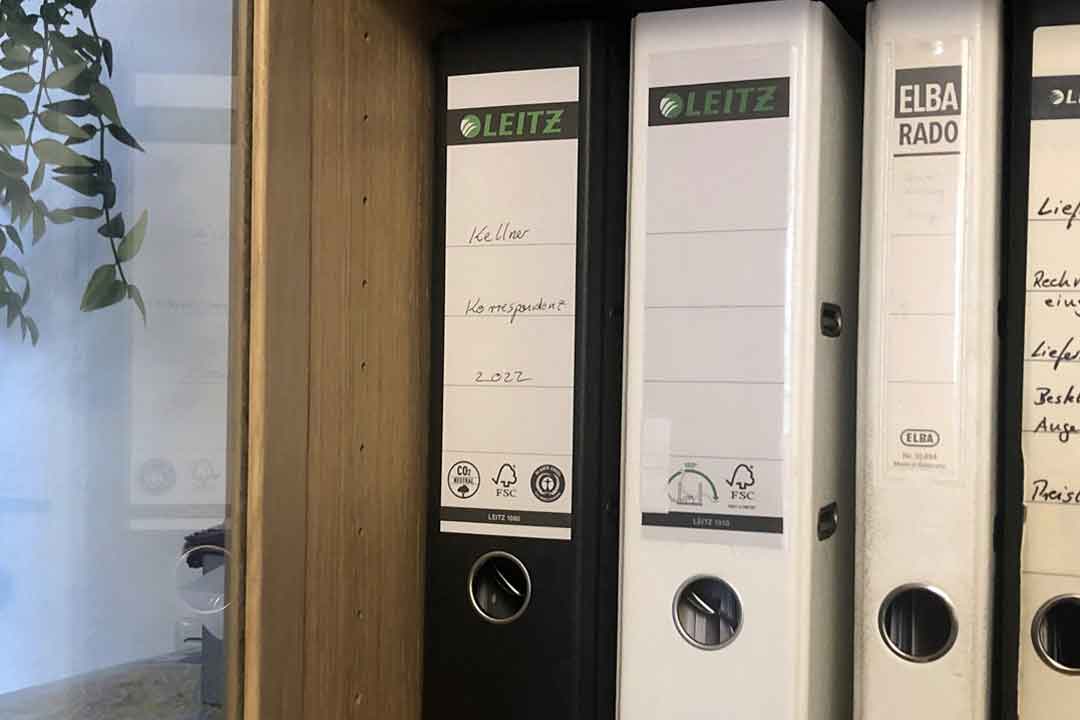
The accounting folder, the most important filing system
The debtor and creditor accounting folder are one of the most important file folders. In it, all receipts about costs and revenues are gathered. These documents are processed by my tax advisor. Since I am a bit of a control freak, I also enter my data into an Excel spreadsheet, which allows me to keep a close eye on my business over the year, but also over the last few years or decades. Working with Excel is an extra effort, but it helps me learn more about how my business works and always keeps me on track.
As an artist, I always have many projects going on at the same time. Having a clean organization and accounting prevents me from going crazy with work, and it allows me to work every day of the week. It also allows me to plan investments, or what becomes necessary in my professional life, and I am always prepared for anything.
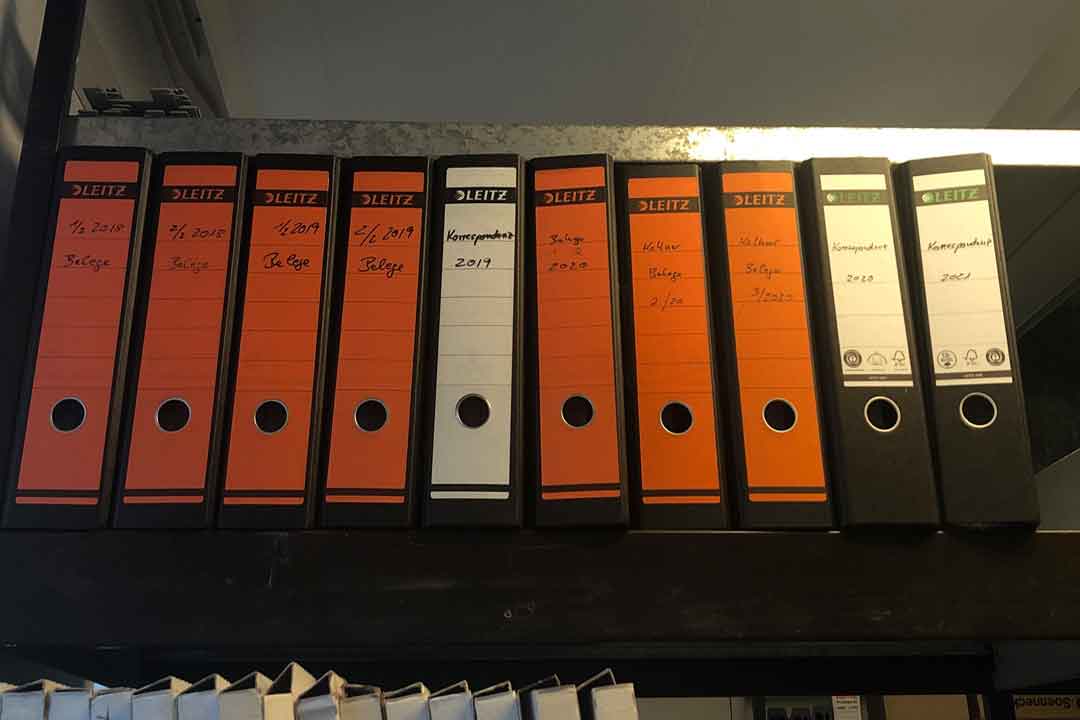
Archive of exhibition and publication, my artfacts.net profile
Oh, my goodness! That's a huge pile of paper that probably weighs a tone by itself! All the publications and folders with collected exhibition reviews, postcards etc. together measure at least 8 meters in length. It is probably the longest dust collector in our house. This archive has been of nonuse several times. During the banking crisis in 2008, it turned out to be very useful for me. When the economy and the markets collapsed, galleries stopped exhibiting and a hard time began for me as the whole market dropped to zero. At that time, I thought about how I could support my galleries and myself during the crisis by joining an online platform. The galleries are usually present and active on Artsy or Artnet or some other sales platform as a gallery with artworks. I had the idea to put my CV on the artfacts.net website to be able to visualize my position in the art market. For this, I was in need of some documents that could prove the exhibitions I had produced since the beginning of my career. Fortunately, I am one of those people who keep everything significant and don't throw things away too quickly. Since 1987, I have kept every postcard, every article and every invitation to my exhibitions. So, I was able to create a nice and complete profile on artfacts.net, where all my exhibition data is collected almost completely. Today I am one of the 2,000 most successful artists in the world and one of the 300 best German artists on this Artfacts.net platform, and I am constantly adding new exhibitions there, as well as older ones. Does that help? Who knows? Was it worth it? Definitely yes, because in this market there are no rules on how to write your vita or a bibliography, for example. Everyone thinks they know and behaves in a semi-amateurish way. Working with and on artfacts.net has shown me that the best thing to do is to create a small database in the form of an Excel spreadsheet and collect all the information about the exhibition there. The title, institution, duration of the exhibition, participating artists, address, curator, etc. If you then need a CV for a publication or something else, you can fall back on the collected data. I later succeeded in building up a bibliography out of a similar question. This led to an exhibition in our university library with many of the handmade book designs, monographs, sketchbooks, etc. I have used them for a long time. Today, I no longer use Excel for this, but a classical literature database, as used by scientists, and can thus produce a literature list in the desired format at any time from a selection of 6000 different citation methods. Thus, with the help of Citavi, the 8-metre-long dust catcher of press articles and publications had become a neatly printed bibliography.
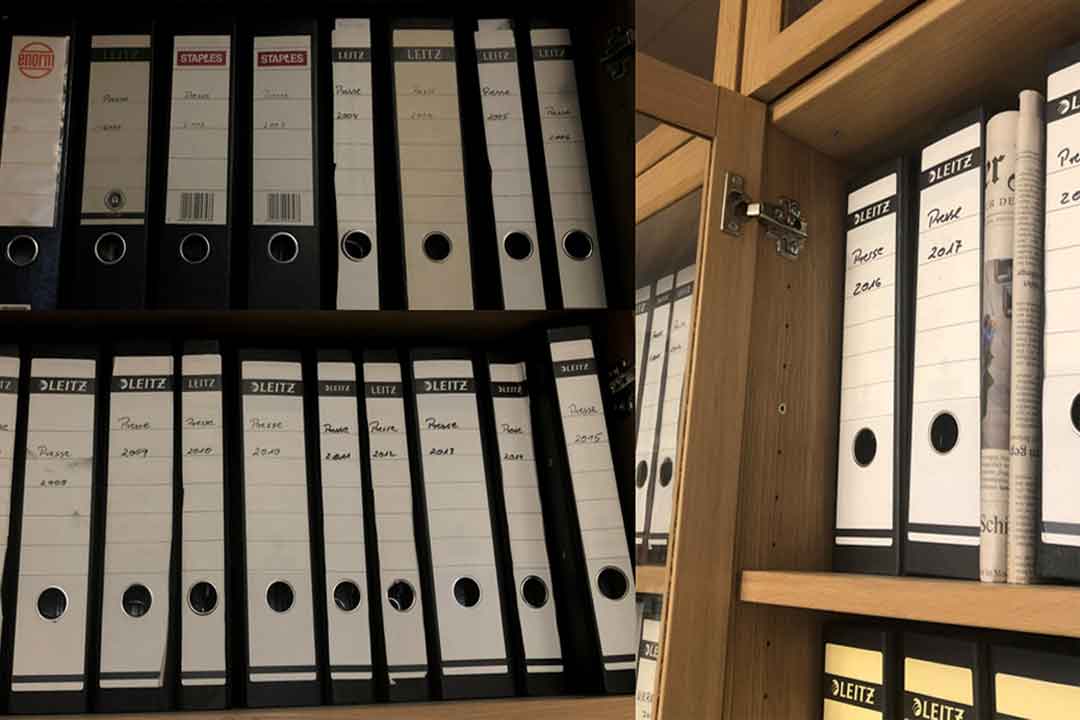
I hope that thanks to this article you have learned more about working with photographs and especially about the importance of archiving! Apart from the benefits of organizing, it is also an easy way to archive memories and spend your time not searching but finding and making more sense. I invite you to reflect on what your own archived documents and files have given you and how you find them important.
If you want to learn more about my life as a photographic artist, you can find many more articles here on my blog.
Author
Eva Coutinho, born October 5, 2002 in Orléans, France
Studies: European Business Communication
Internship: from November 2021 to February 2022 at studio Thomas Kellner
Interests: I listen to music a lot and want to travel all around the world (next destination Cancùn, Mexico)
